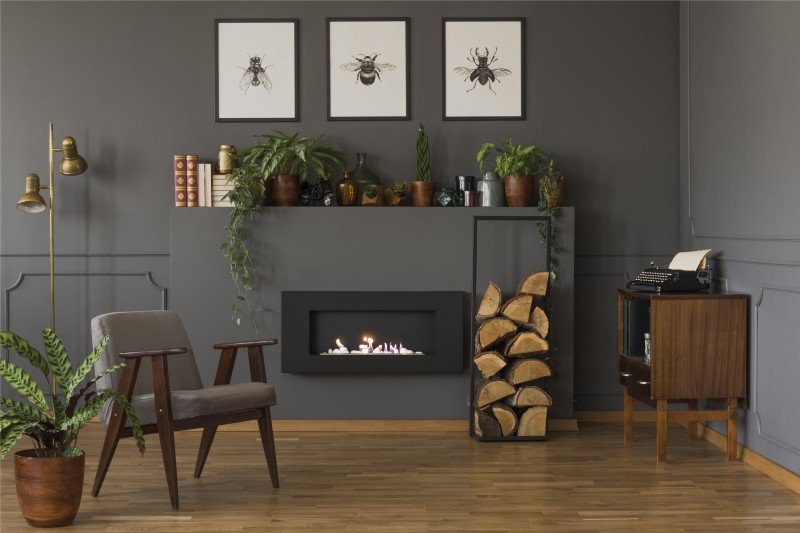A Comprehensive Guide to Small Fireplaces: Efficient Heating and Cozy Living
In an age where energy efficiency and area optimization are ending up being progressively essential, small fireplaces have actually become an appealing option to traditional, large hearths. These compact heating services use warmth and a centerpiece for any room, heightening both comfort and visual appeal. This post explores the various kinds of small fireplaces, their benefits, setup considerations, and maintenance pointers, eventually helping property owners make notified decisions when considering these lovely heating choices.
Understanding Small Fireplaces
Small fireplaces offer a variety of styles, consisting of electric, gas, ethanol, and wood-burning designs. Each type provides special benefits and design possibilities, making them suitable for various living spaces.
Types of Small Fireplaces
| Fireplace Type | Description | Pros | Cons |
|---|---|---|---|
| Electric | Uses electrical energy to create heat. Uses numerous styles, consisting of wall-mounted and freestanding units. | - Easy to install - Low upkeep - No venting required | - Limited heat output - May sustain higher electrical power costs |
| Gas | Burns natural gas or propane. Frequently available as logs in a traditional fireplace or modern styles. | - Efficient heat output - Cleaner than wood - Easy ignition | - Requires gas line installation - Some systems need venting |
| Ethanol | Burns bioethanol, supplying genuine flames without a chimney. | - Eco-friendly - Portable - No installation needed | - Limited heat output - Higher fuel costs |
| Wood-Burning | Traditional fireplaces that burn firewood. Often utilized in more rustic settings. | - Great heat output - Rich ambiance - Can be utilized throughout power outages | - Requires a chimney - Regular maintenance and cleaning |
Benefits of Small Fireplaces
- Area Efficiency: Small fireplaces are perfect for houses, apartments, and smaller homes. Minimalist Fireplaces without using up excessive floor area.
- Economical Heating: In particular cases, small fireplaces can supplement main heating unit, reducing overall energy expenses while developing a more comfortable environment.
- Atmosphere and Aesthetics: They provide a welcoming focal point to a room, creating a cozy atmosphere best for relaxation and celebrations.
- Adaptability: Available in numerous styles and styles, small fireplaces can complement any decor, from modern minimalist to rustic traditional.
Installation Considerations
When considering a small fireplace, setup is an essential factor that can affect the option of design. Below are handy factors to consider:
- Local Regulations: Building codes can vary by location; always check regional standards before installation.
- Ventilation Needs: Depending on the type, small fireplaces may require various ventilation systems. Gas fireplaces might need venting outdoors, while electric models do not.
- Source of power: Electric designs require distance to electrical outlets, while gas and ethanol models might need a gas line or fuel storage.
- Weight and Structure: Installing wall-mounted units might require enhanced wall areas, whereas free-standing designs are easier to relocate.
Upkeep Tips
Like any other home appliance, small fireplaces require regular maintenance to operate successfully and securely. Here are essential maintenance ideas for different fireplace types:
For Electric Fireplaces:
- Cleaning: Wipe down the system with a soft cloth to remove dust and keep the heating unit ducts clear.
- Evaluation: Check the power cord regularly for any damages or signs of wear.
For Gas Fireplaces:
- Annual Inspections: Schedule annual examinations by a professional to ensure safe gas circulation.
- Clean the Logs: Regularly clean the burner and logs to preserve optimal performance.
For Ethanol Fireplaces:
- Fuel Storage: Store ethanol fuel safely far from direct sunshine and heat sources.
- Regular Cleaning: Clean the burner after each usage to preserve performance and prevent soot buildup.
For Wood-Burning Fireplaces:
- Chimney Sweeping: Have the chimney professionally cleaned as soon as a year to avoid creosote accumulation.
- Fire wood Storage: Only use dry, skilled wood to minimize smoke and promote efficient burning.
Frequently Asked Questions
1. Can I install a small fireplace myself?
While some electric and ethanol fireplaces are relatively easy to set up, it is recommended to employ a professional for gas and wood-burning systems to guarantee compliance with local structure codes.
2. How much does it cost to run a small fireplace?
The cost will differ depending on the type of fireplace. Normally, electric fireplaces might incur higher electrical energy costs, while wood-burning options can draw from renewable firewood supplies.
3. Do I require a license for setup?
Authorizations are usually required for gas and wood-burning fireplaces due to their setup complexity and security regulations. Always talk to regional authorities.
4. For how long can I run an electric fireplace?
Many electric fireplaces can run for long durations; however, it's suggested to follow manufacturer guidelines to avoid getting too hot or damaging the system.
5. What kind of small fireplace is best for a small area?
This largely depends on private requirements. Electric models are flexible and easy to set up, while gas and ethanol options provide genuine flames with effective heat output.
Small fireplaces represent a practical and stylish alternative for those looking for effective heating options in compact home. With numerous types readily available, house owners can pick models that align with their aesthetic preferences and area requirements. By understanding the installation procedures and routine upkeep required, individuals can enjoy the comfort and atmosphere that small fireplaces offer for many years to come. Whether for a cozy evening at home or an inviting area for gatherings, small fireplaces are a long-lasting element of modern and traditional decoration alike.

